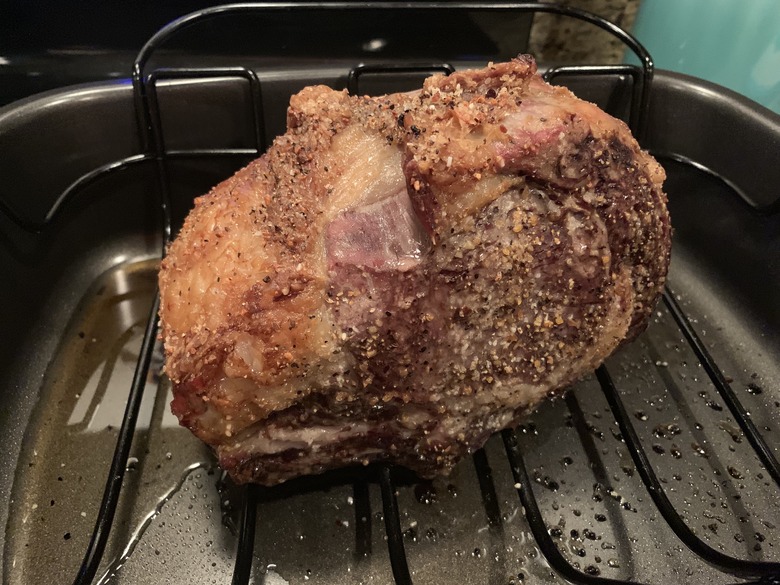The Dangers Of Rust On A Roaster Pan
Roasting is a cooking technique that brings out the full flavor of food, such as meat. If you cook meat in a roasting pan, you have the added benefit of catching the juices, which can be used to make a rich, flavorful gravy. Depending on the material of the roasting pan, it can eventually become rusty. In addition to being unsightly, rust on cookware can affect the flavor of the food. There may also be health considerations.
How Roasting Pans Become Rusty
How Roasting Pans Become Rusty
Rust is a reddish or yellowy-brown coating made of iron oxide that can form on steel or iron. This is a naturally occurring chemical process that results in the decomposition of steel and iron, according to Sciencing. Rusting occurs when metal is exposed to a combination of water and oxygen.
If roaster pans are kept completely dry, rusting won't occur. There is moisture naturally occurring in the air, however. How much moisture is in the air often depends on where you live. Humid climates have more moisture in the air. In such moist climates, you'll be much more likely to have problems with rust on your cookware.
Is Eating Rust Dangerous?
Is Eating Rust Dangerous?
According to the University of Illinois at Urbana-Champaign, eating a little bit of rust isn't dangerous to your health. Rust is iron oxide, and it is considered a benign substance in small quantities. Considering that rust isn't meant to be consumed, however, it's best to avoid eating rust.
Although rust is associated with tetanus, it isn't the rust that is the cause of tetanus. This sometimes-deadly central nervous system disease is caused by a bacterium present in soil and manure. Immunization against rust guards against contracting the disease.
Types of Roaster Pans
Types of Roaster Pans
A wide variety of roaster pans exist. Each has various benefits and downsides. The following are a few of the most common types of roaster pans, including their pros and cons.
-
Enamel/porcelain coated roasting pans. An enamel roasting pan consists of a hardened enamel coating on top of another type of material, such as cast iron.
The enamel or porcelain coating on the roaster pan is scratchproof and creates a nonstick surface. An enamel roasting
pan is a good choice if you want to prevent rusting. The downsides of porcelain
coated roasting pans include that they are somewhat heavy. Enamel roasting pans also tend to be more
expensive than roasting pans made of cheaper materials, such as aluminum.
-
Aluminum roasting pan. Aluminum is a good conductor of heat, making it a popular material for roaster pans. Aluminum
is also the most lightweight of roaster pan materials. On the downside, because
aluminum heats up so quickly, it is easy to burn foods in this type of roaster pan. Aluminum
doesn't rust, but it does oxidize. This leads to a blackened or darkened
surface to the pan. This darkening is especially common when you cook dishes containing
lemon, vinegar or egg yolk in aluminum roaster pans. To prevent
burned foods and discolored cookware, try using anodized aluminum cookware.
This refers to a treatment process that hardens the aluminum and makes it take longer
to heat up. Anodized aluminum is also more scratch and stain resistant.
-
Stainless steel roasting pan. A popular material for roaster pans,
stainless steel does a good job of distributing heat, which leads to even
cooking. This material tends to be durable and is generally stain resistant. Despite the
name, stainless steel roasting pans can rust. To prevent your stainless steel
pans from rusting, wash the pan with mild soap and thoroughly dry after
use.
